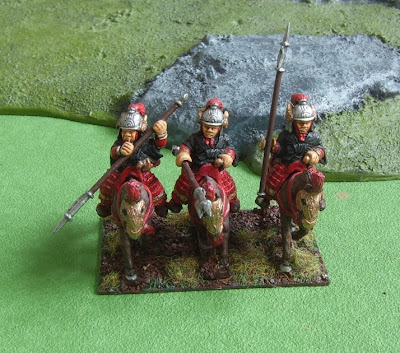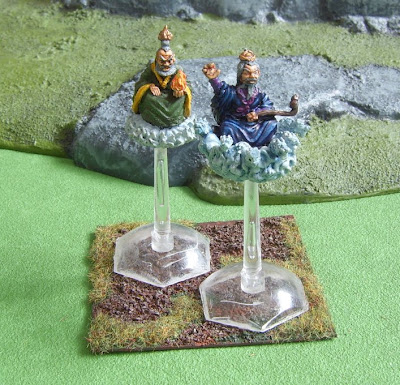There is a tendency in the tradition of the more narrative focused, more loosely written games like Hail Caesar and Black Powder to be quite down on points based systems for army selections. Rick Preistly seems to be quite down on it in the interviews I've read, equating it with Tournament and Competitive play specifically. In fact Preistly is not particulary keen on army lists at all.
"we will do them as players feel they need them - in reality there's no surviving evidence to make these judgements but dedicated researchers have given us the WAB and FOG army lists and people feel they need them." (Miniature Wargames 333, January 2011)Its interesting that Jervis Johnson, the Black Powder co-writer, also tried to limit the use of points in Epic: Armageddon for Games Workshop, creating tournament specific lists and leaving large numbers of older miniatures with rules but no points values.
The rather wonderful free Doctor Who Miniature Game also left out points values, justifying it with this statement
Points values are not given for models in the DWMG. This has been a subject of much debate, but my final word is that I think that balancing games with a fixed points limit on models limits creativity and encourages tournament style play. Most scenarios for the game involve mismatched forces – true to the episodes themselves – with victory usually obtainable by achieving specific conditions in each game.I quote this statement because it sums up the view of many about points-based systems, that they encourage competitive, tournament style play and are not suitable for looser, narrative based games.
I'm not sure that I agree. I think it would be true if players expected points to provide a perfectly balanced rating system such that armies of equal points would always be of equal effectiveness on the table. But in practice I think gamers are more nuanced than that. Points values are there to provided a rough ready reckoner such that two players can quickly rustle up to armies and, 9 times out of 10, play a reasonably fair and balanced game.
But why should this be so important? As the statement from DWMG says, not all encounters will be between balanced forces. In real life armies are rarely of equal size or effectiveness. But the crucial thing to understand here is that these are Wargames, the Game element is as crucial as the War and in a game both sides need a reasonable chance of victory in order to keep it interesting.
I'm not saying that games have to be scrupulously fair or that players should enter into them with a 'win at all costs' attitude. I am saying that games in which players are pitted against one another require both sides to attempt to win and to have a chance of doing so in order to keep things interesting. Of course fair play and good humour is important, particularly in friendly games, but there is little enjoyment in playing a passive opponent or in being beaten without even the possibility of being able to fight back.
So where do points values fit into all this? Well, points values give players a ready reckoner for wants constitutes a balanced scenario. This is important if you want to make sure that both players have a roughly equal chance of success and helps to avoid a one sided game.
That isn't to say that all scenarios should involve forces of equal size or strength. There has been a Warhammer scenario since 5th edition called last stand in which one side has twice the points of the other and the underdogs only roll is to keep at least one unit alive until the end of the game, gaining a big victory point bonus for doing so. It is possible to tweak relative points values to allow for more unequal encounters or to handicap more experienced players.
The point that sometimes seems to be forgotten by games designers is that not everyone is like them. Which is to say, not everyone has a great deal of experience creating balanced scenarios and judging the strength of armies. Some years ago I was introducing a friend to a new skirmish game. I had two lots of models, one were supposed to be elite troopers the other raw recruits so I devised a basic scenario in which the raws outnumbered the elites 2 to 1 figuring this would be balanced. The elites got slaughtered, clearly because I had overestimated the effect of troop quality. This is the draw back of having no mechanism to help players judge the relative strength of the troops.
Of course not all points systems are fair and balanced and mistakes happen. But points can still do a lot of good in helping players to devise more interesting games.






